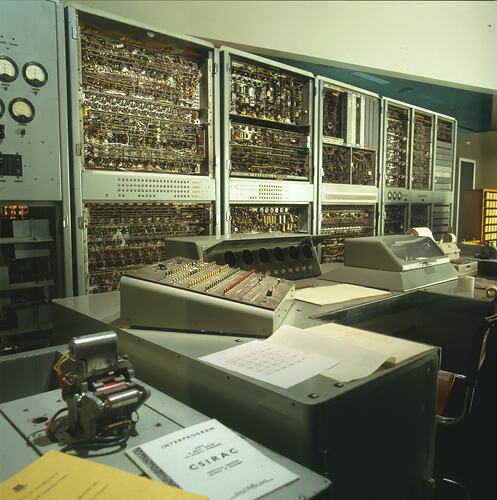Magnetic Storage System, Input register and Writing Circuits
Schematic Diagram C21976
In running a program on CSIRAC, users employed the magnetic drum as a working store. It was not large enough to be a permanent memory store. Users relied on paper tape storage for this. When finished, the next user might overwrite the information; a user could not assume that the information would be there next time.
The CSIRAC drum store was not used as a hard drive as used in 2007.
The operation of this circuitry is the opposite to the way computers in 2007 operate. Computers in 2007 operate in a parallel manner and the store disks are written and read in a serial manner. CSIRAC was a serial machine and information was written and read to the drum store in a parallel manner.
This schematic diagram shows the circuitry required to write a word of information from a register or the memory (mercury delay lines) to the drum store.
The information from memory or register is read as a one bit serial stream but is written to the drum in parallel as a 20 bit word. So a serial to parallel conversion is needed.
This conversion involves information from the computer memory or register to be written sequentially into a parallel register. The information is then written to a specific location on the magnetic drum.
A circuit called a flip flop is required to store one bit of information. A flip flop comprises one double triode and other components (resistors and capacitors). Associated circuitry involves the input and output of information. On the input side there is circuitry to select the correct serial pulse (digit) to be stored. On the output side there is a separate circuitry to send each digit to the correct read write head on the drum.
There are 20 of these flip flop and related circuits. Only the circuitry relating to bits one and twenty are shown on the diagram.
More Information
-
Keywords
Computer Accessories, Computer Hardware, Computers, Computing, CSIRAC (Computer)
-
Authors
-
Article types
